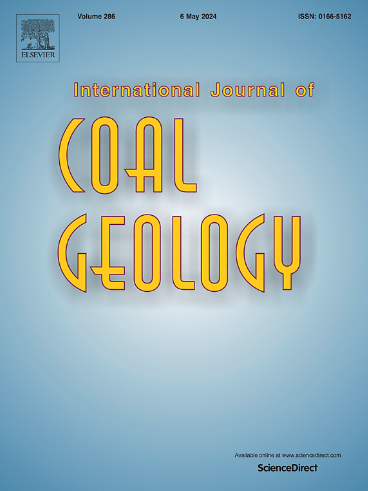The K isotopic signatures of coals: A reconnaissance study
IF 5.7
2区 工程技术
Q2 ENERGY & FUELS
引用次数: 0
Abstract
Potassium (K) isotopes are significantly fractionated in sediments, with biological samples exhibiting even greater K isotopic variability than geological samples. Coal is a unique type of sedimentary rock composed of organic matter and minerals, both of which are K-rich. Therefore, K isotopes hold the potential for tracing the origin of coal and understanding coal-forming processes. However, our knowledge of K isotopes in coals is limited due to the scarcity of K isotopic studies on coals. In this study, we conducted the first detailed investigation of K isotopes in 12 coal samples of varying ranks by analyzing the abundance and isotopic compositions of K in different phases. We ashed the coals and sequentially leached K from the ashes with deionized water (DW), ammonium acetate (AA), HCl, and HF, followed by elemental and isotopic analyses. The majority of K occurs in DW-leached and HF-leached fractions of these coal samples, representing the K associated with organic matter and the K that exists in the silicate phase, respectively. The bulk K content of the twelve studied coals ranges from 0.004 to 1.308 wt%, with the HF-leached K holding the dominant K budget. The δ41K values vary from −1.19 ‰ to 0.52 ‰ in the DW-leached phase, and from −1.27 ‰ to −0.22 ‰ in the HF-leached phase of the low temperature coal ashes. The large variations in δ41K values of DW leachate are attributed to the plants decay and diffusion in pore fluids in the early stage of diagenesis. The K isotope compositions of the HF-leached K in coals are variable and lighter than average igneous rocks (δ41KBSE = −0.43 ‰). Pore fluid exchanges likely caused the preference for 39K in the silicate phase of coal. The K isotope compositions of coals overall reflect 39K enrichment during diagenesis or organic matter inheritance.
煤的钾同位素特征:一项勘察研究
钾(K)同位素在沉积物中有明显的分异,生物样品比地质样品表现出更大的钾同位素变异性。煤是一种独特的由有机质和矿物组成的沉积岩,两者都是富钾的。因此,K同位素具有追踪煤的起源和了解成煤过程的潜力。然而,由于煤中K同位素研究的缺乏,我们对煤中K同位素的认识有限。本研究通过分析不同相K的丰度和同位素组成,首次对12个不同等级煤样品的K同位素进行了详细的研究。我们将煤灰化,然后用去离子水(DW)、乙酸铵(AA)、盐酸(HCl)和氟化氢(HF)依次从灰中浸出K,然后进行元素和同位素分析。大部分钾存在于这些煤样的dw浸出和hf浸出馏分中,分别代表与有机质相关的钾和存在于硅酸盐相的钾。所研究的12种煤的体积钾含量在0.004 ~ 1.308 wt%之间,以hf浸出的钾占主导地位。低温煤灰的δ41K值在dw浸出阶段为- 1.19‰~ 0.52‰,在hf浸出阶段为- 1.27‰~ - 0.22‰。DW渗滤液δ41K值变化较大,与成岩早期植物在孔隙流体中的衰变和扩散有关。煤中hf浸出钾的同位素组成变化较大,且较火成岩轻(δ41KBSE =−0.43‰)。孔隙流体交换可能导致煤中硅酸盐相中39K的富集。煤的K同位素组成总体反映了成岩作用或有机质继承过程中39K的富集。
本文章由计算机程序翻译,如有差异,请以英文原文为准。
求助全文
约1分钟内获得全文
求助全文
来源期刊

International Journal of Coal Geology
工程技术-地球科学综合
CiteScore
11.00
自引率
14.30%
发文量
145
审稿时长
38 days
期刊介绍:
The International Journal of Coal Geology deals with fundamental and applied aspects of the geology and petrology of coal, oil/gas source rocks and shale gas resources. The journal aims to advance the exploration, exploitation and utilization of these resources, and to stimulate environmental awareness as well as advancement of engineering for effective resource management.
 求助内容:
求助内容: 应助结果提醒方式:
应助结果提醒方式:


